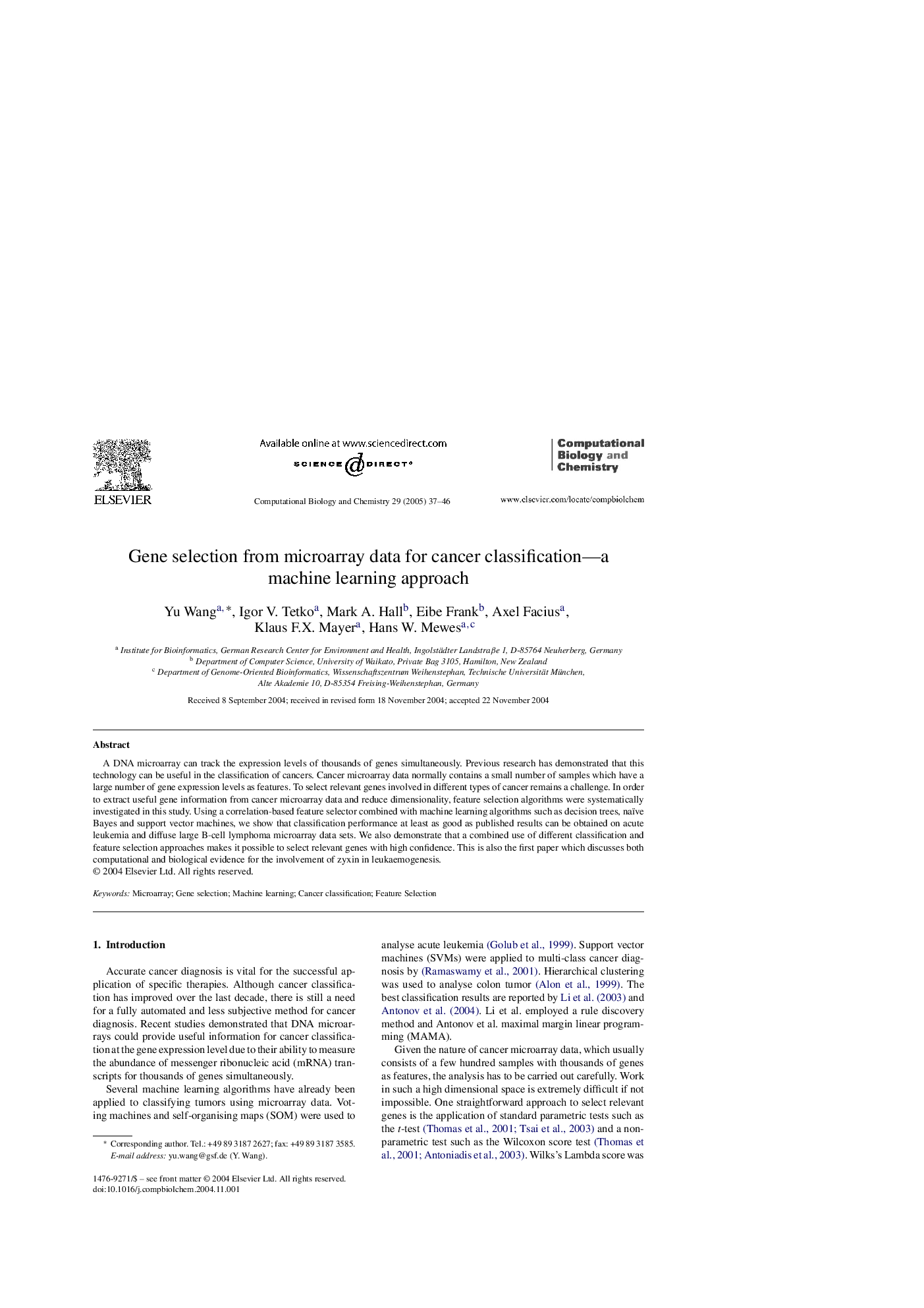| Article ID | Journal | Published Year | Pages | File Type |
|---|---|---|---|---|
| 10231989 | Computational Biology and Chemistry | 2005 | 10 Pages |
Abstract
A DNA microarray can track the expression levels of thousands of genes simultaneously. Previous research has demonstrated that this technology can be useful in the classification of cancers. Cancer microarray data normally contains a small number of samples which have a large number of gene expression levels as features. To select relevant genes involved in different types of cancer remains a challenge. In order to extract useful gene information from cancer microarray data and reduce dimensionality, feature selection algorithms were systematically investigated in this study. Using a correlation-based feature selector combined with machine learning algorithms such as decision trees, nave Bayes and support vector machines, we show that classification performance at least as good as published results can be obtained on acute leukemia and diffuse large B-cell lymphoma microarray data sets. We also demonstrate that a combined use of different classification and feature selection approaches makes it possible to select relevant genes with high confidence. This is also the first paper which discusses both computational and biological evidence for the involvement of zyxin in leukaemogenesis.
Related Topics
Physical Sciences and Engineering
Chemical Engineering
Bioengineering
Authors
Yu Wang, Igor V. Tetko, Mark A. Hall, Eibe Frank, Axel Facius, Klaus F.X. Mayer, Hans W. Mewes,
